Abstract
1. The entry of caesium into sartorius muscle cells is strongly suppressed by the presence of 10-5M strophanthidin in Ringer solution.
2. The amount by which caesium entry is reduced in the presence of strophanthidin is dependent on the intracellular sodium concentration and is greater the higher the intracellular sodium concentration.
3. The magnitude of caesium influx in the absence of strophanthidin is highly dependent on the intracellular sodium concentration.
4. Caesium uptake by muscles in which sodium has been largely replaced by lithium is reduced to very low values.
5. Caesium can promote the extrusion of sodium from muscles with high intracellular sodium concentrations. The effects of 25 mM caesium and 5 mM potassium on sodium extrusion are roughly the same.
6. External potassium inhibits the entry of caesium ions into muscle cells presumably by competing for transport sites.
7. The drug strophanthidin has no effect on 134Cs efflux provided that muscles have been loaded with tracer ions for a long period of time. Caesium efflux from the intracellular compartment appears to occur by a process not mediated by metabolism.
8. The action of strophanthidin on 134Cs efflux from muscles exposed to tracer for short times suggests that caesium ions are transported inwardly by an active process after first accumulating in a superficial reservoir.
Full text
PDF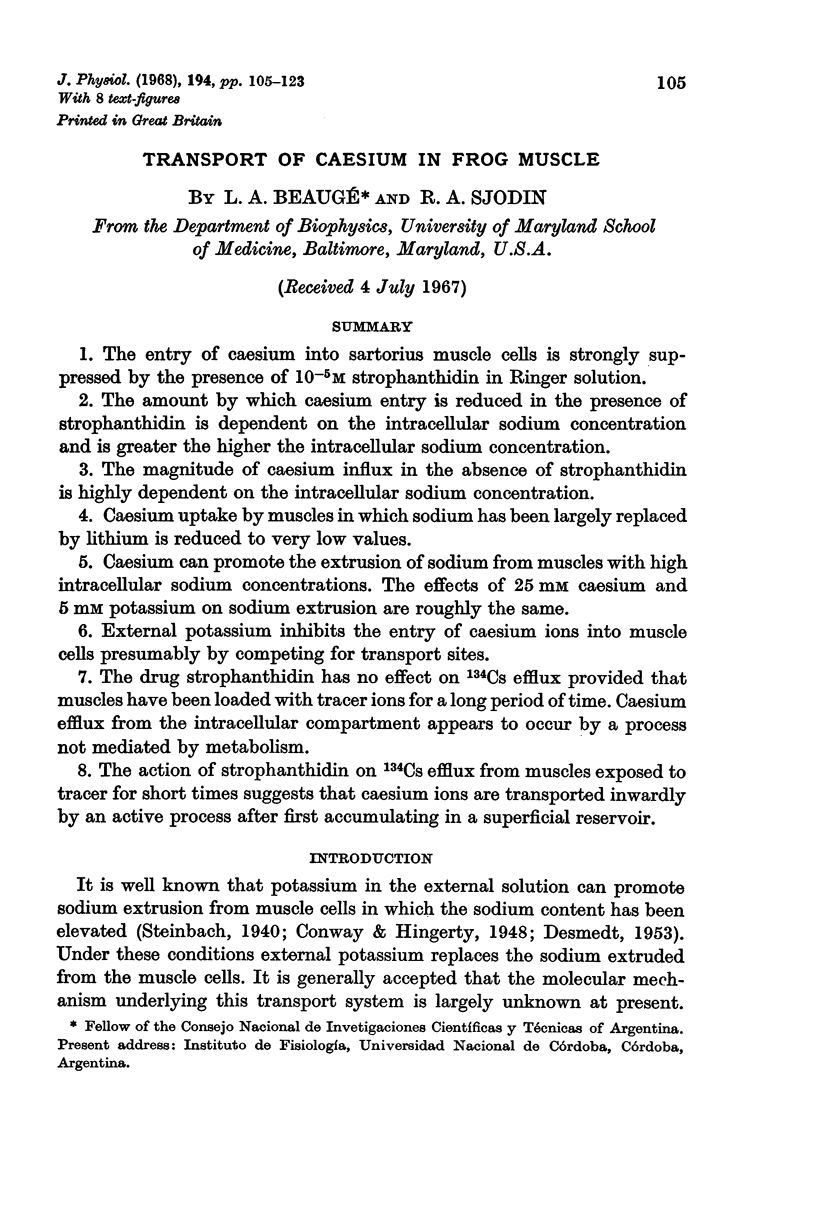
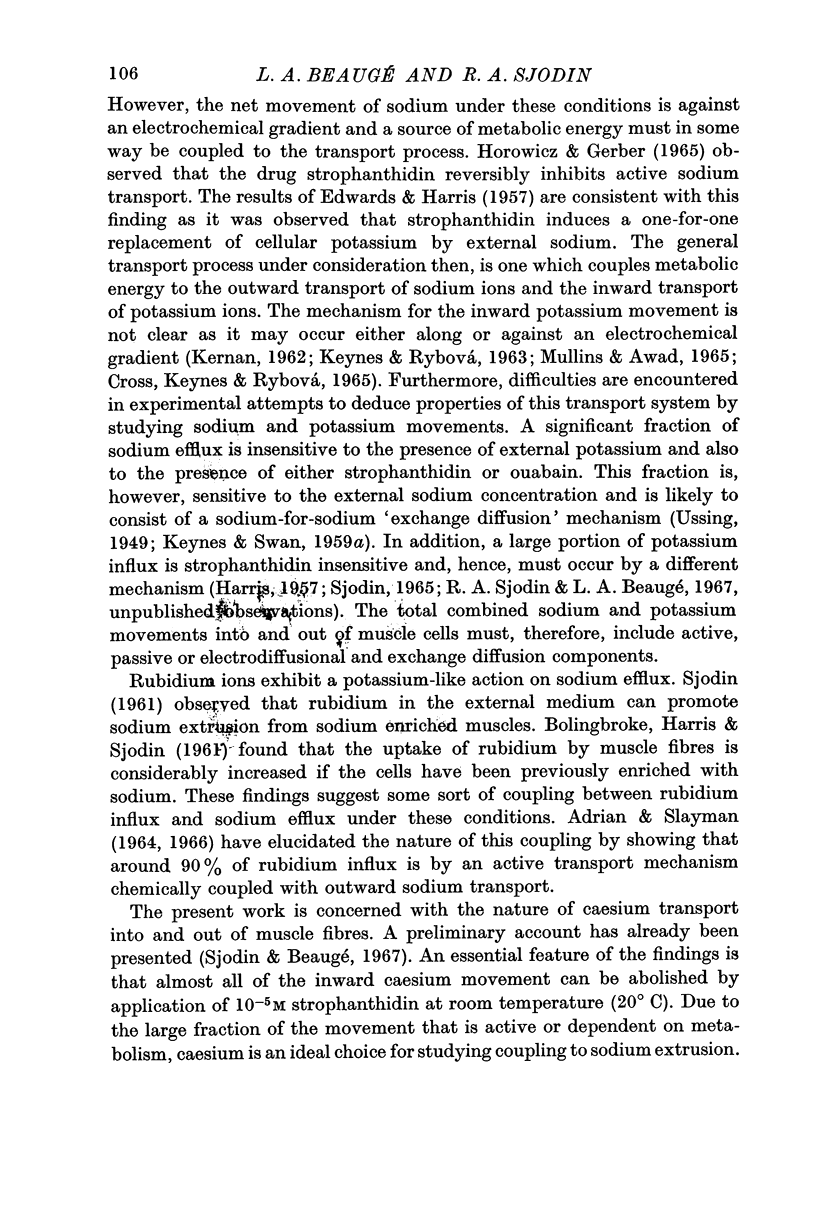
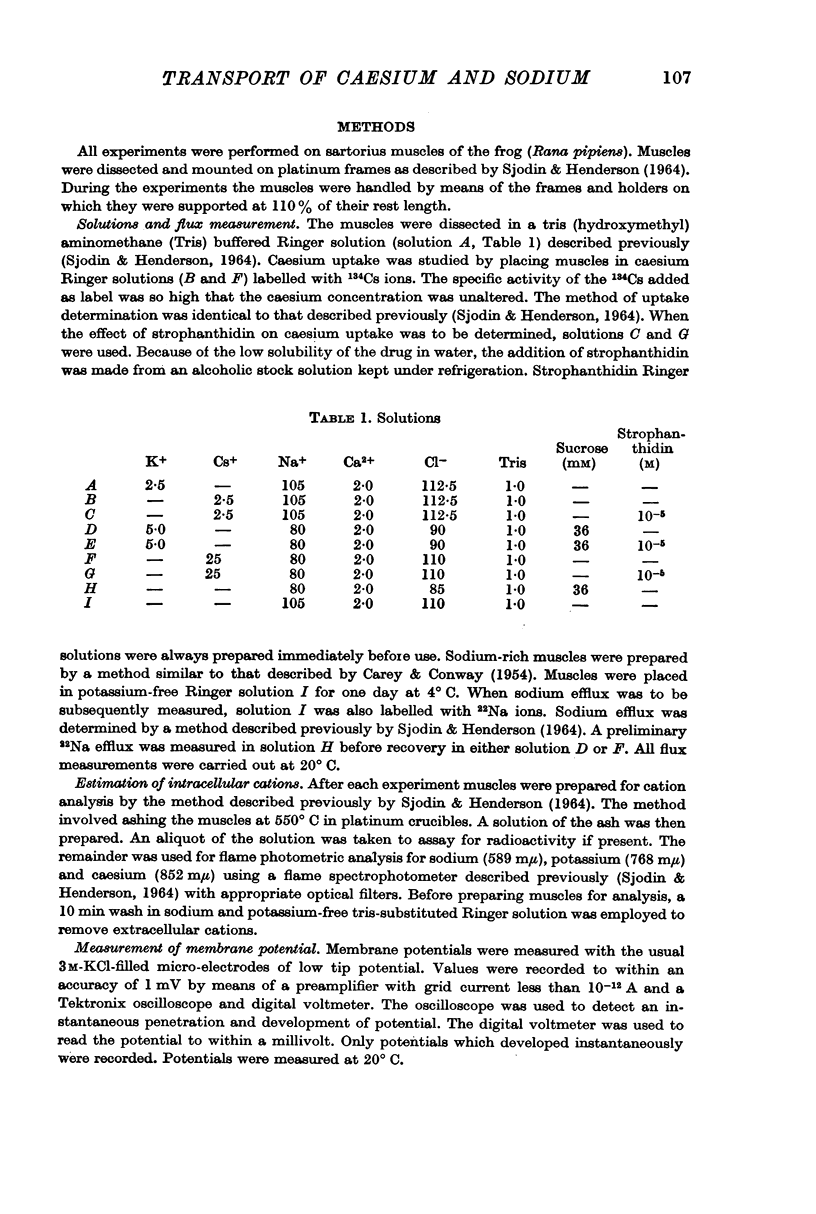
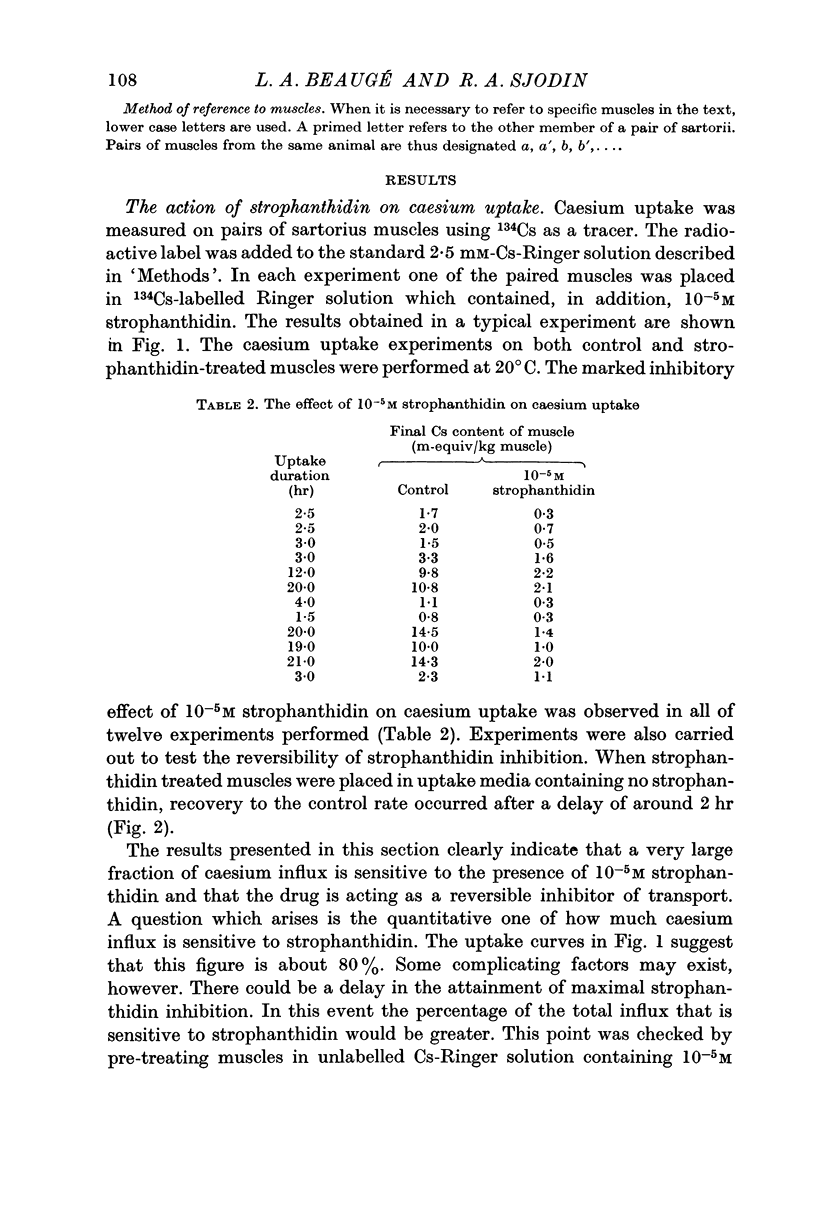
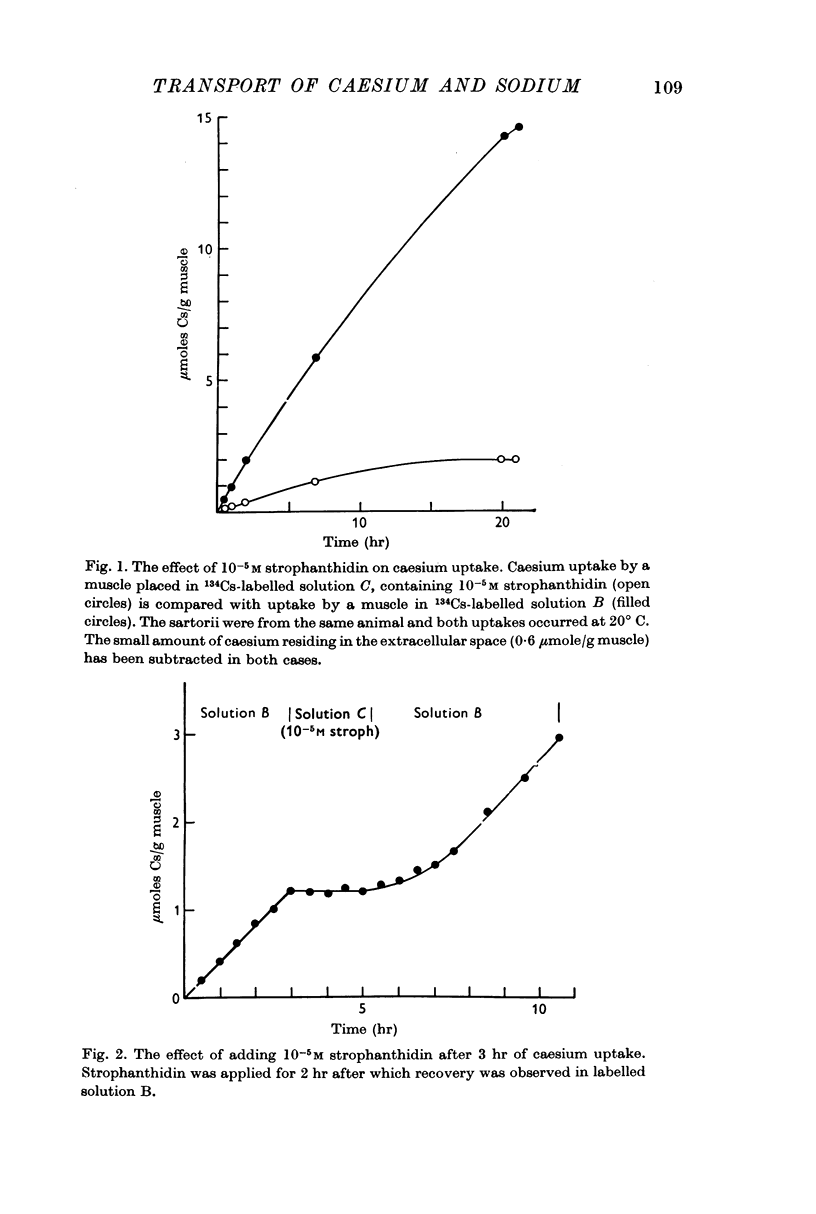
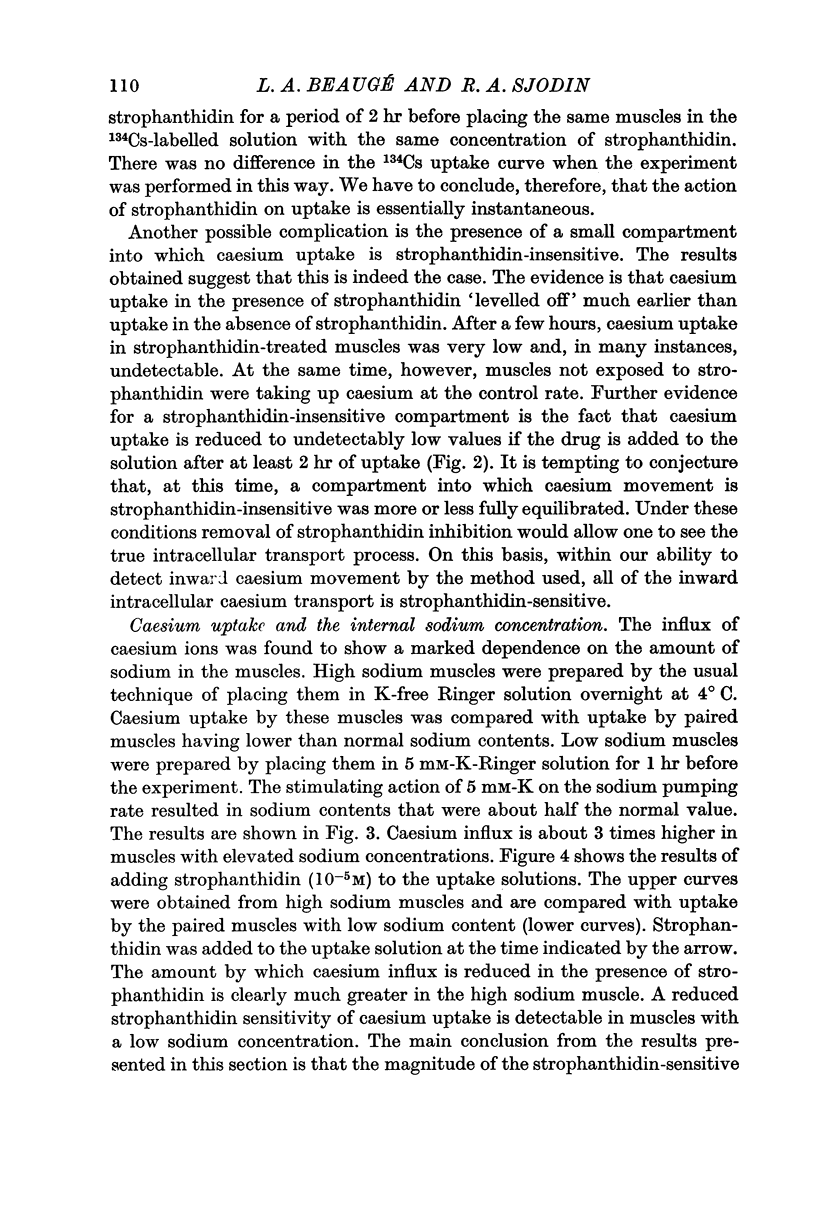
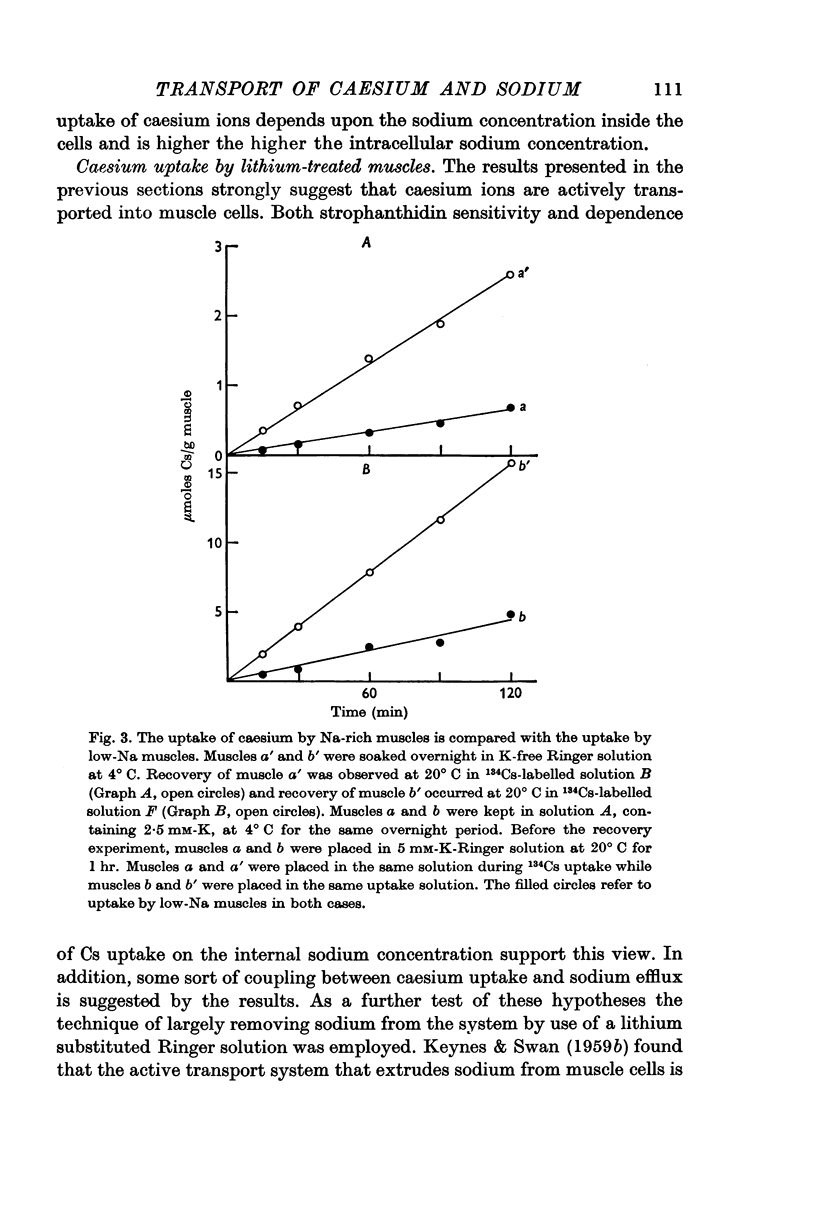
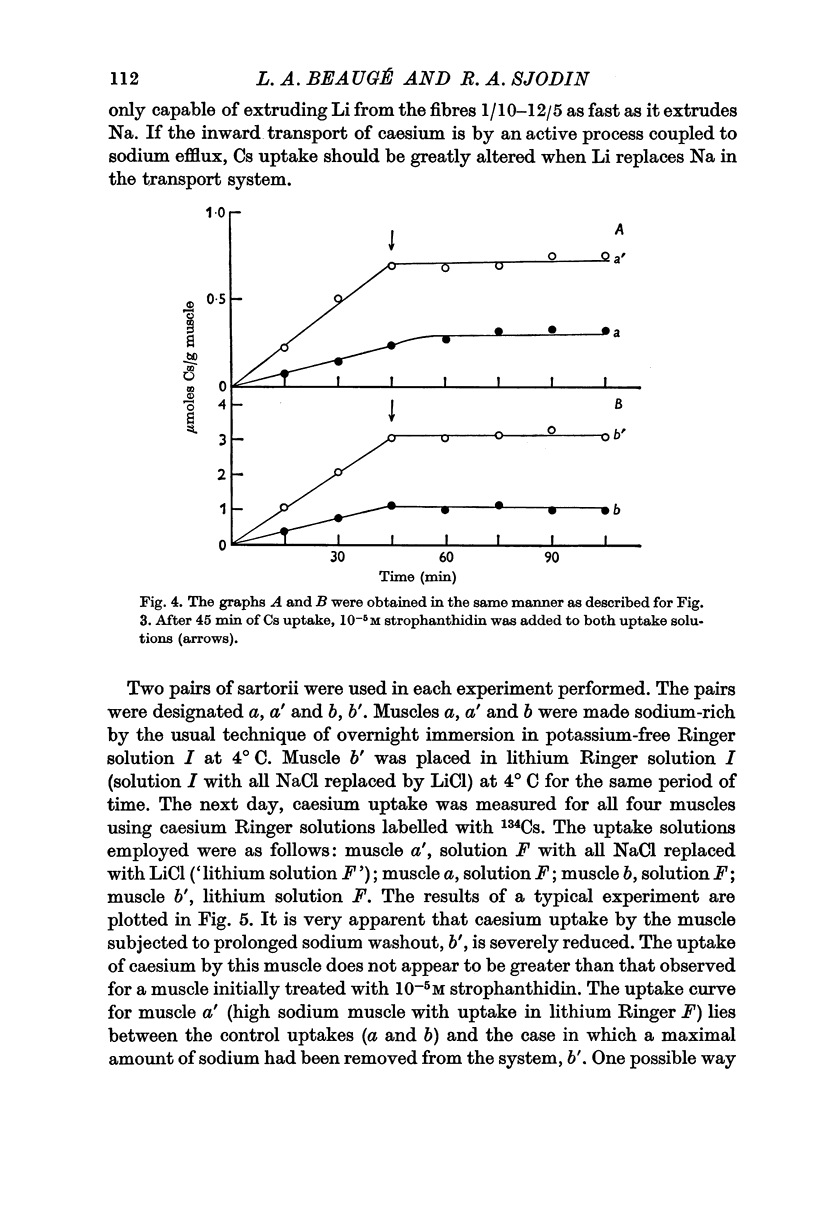

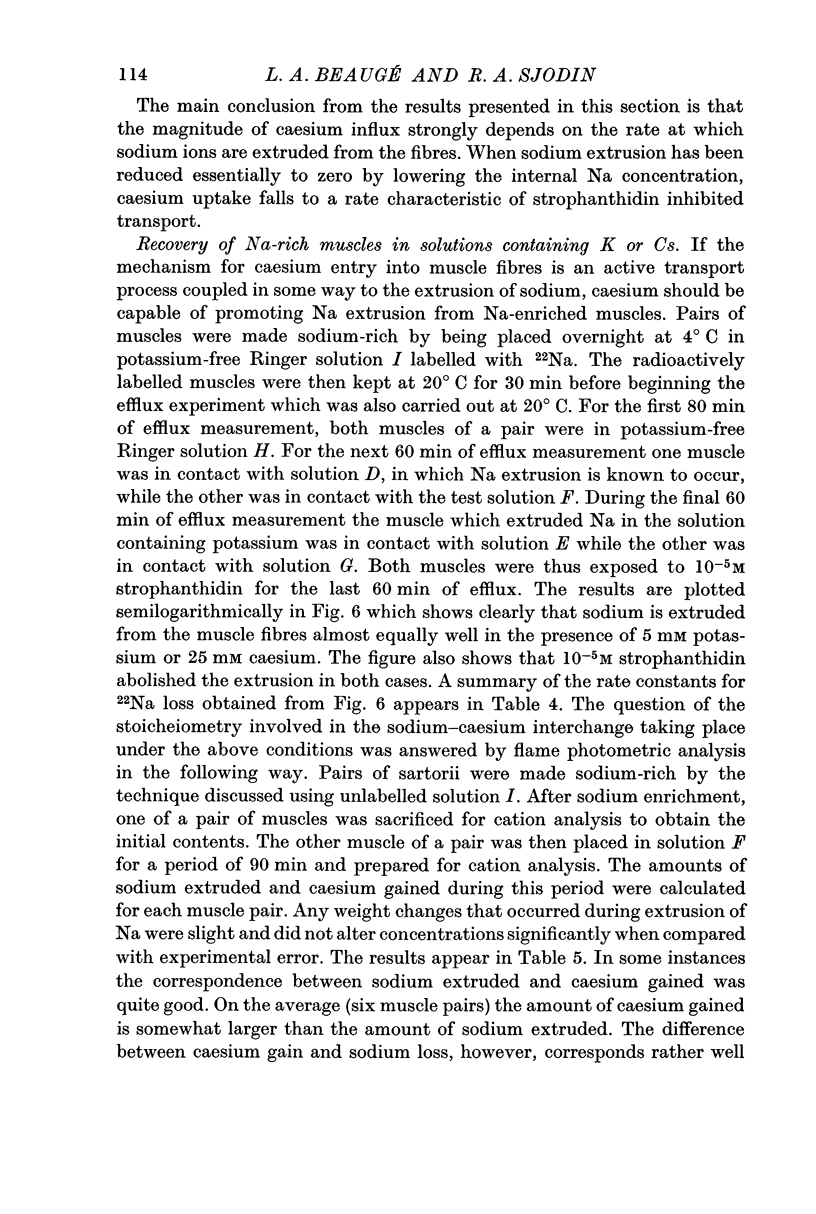
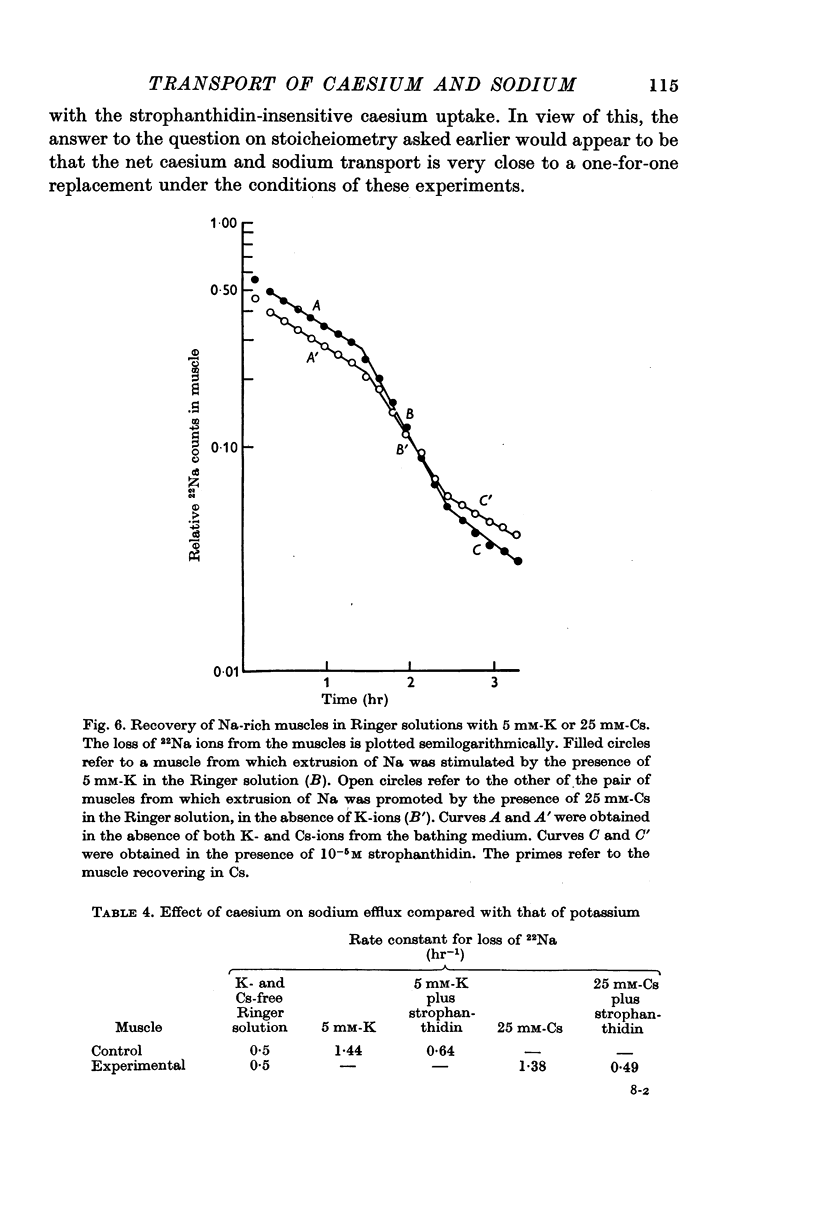
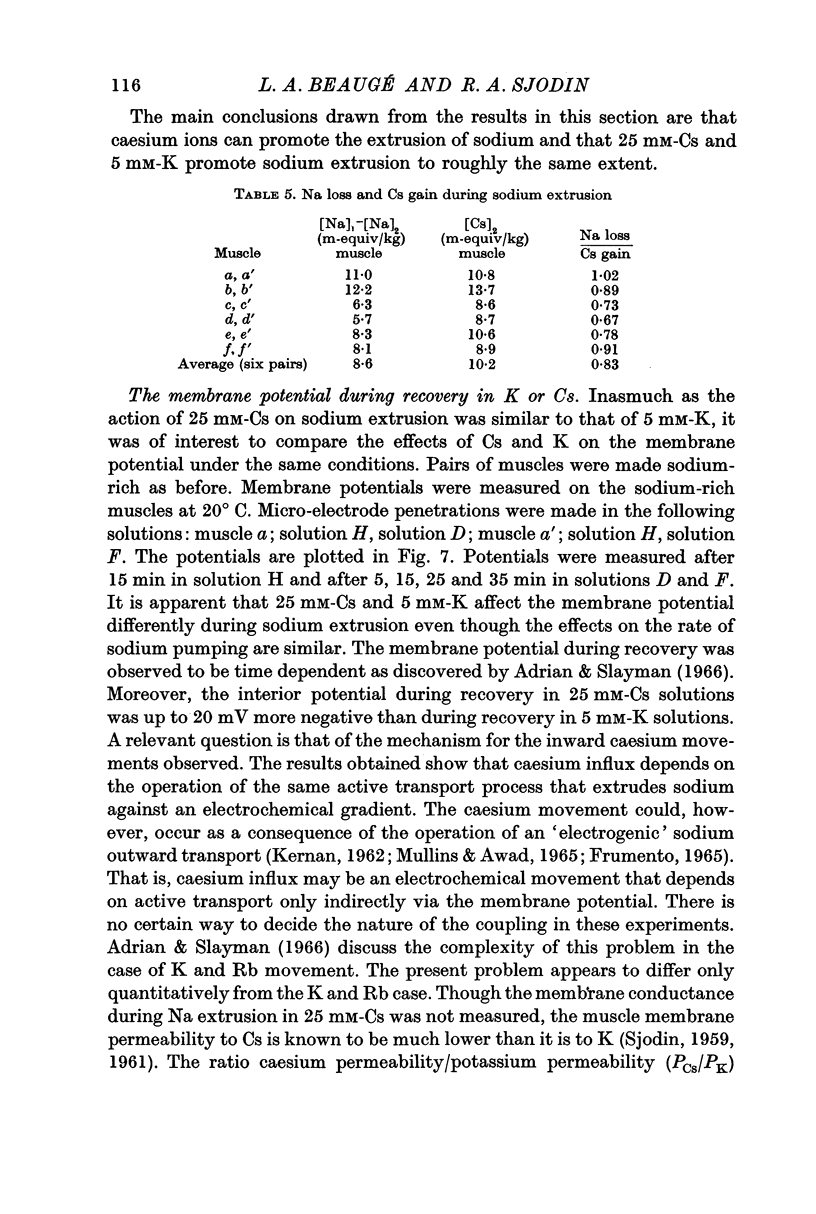
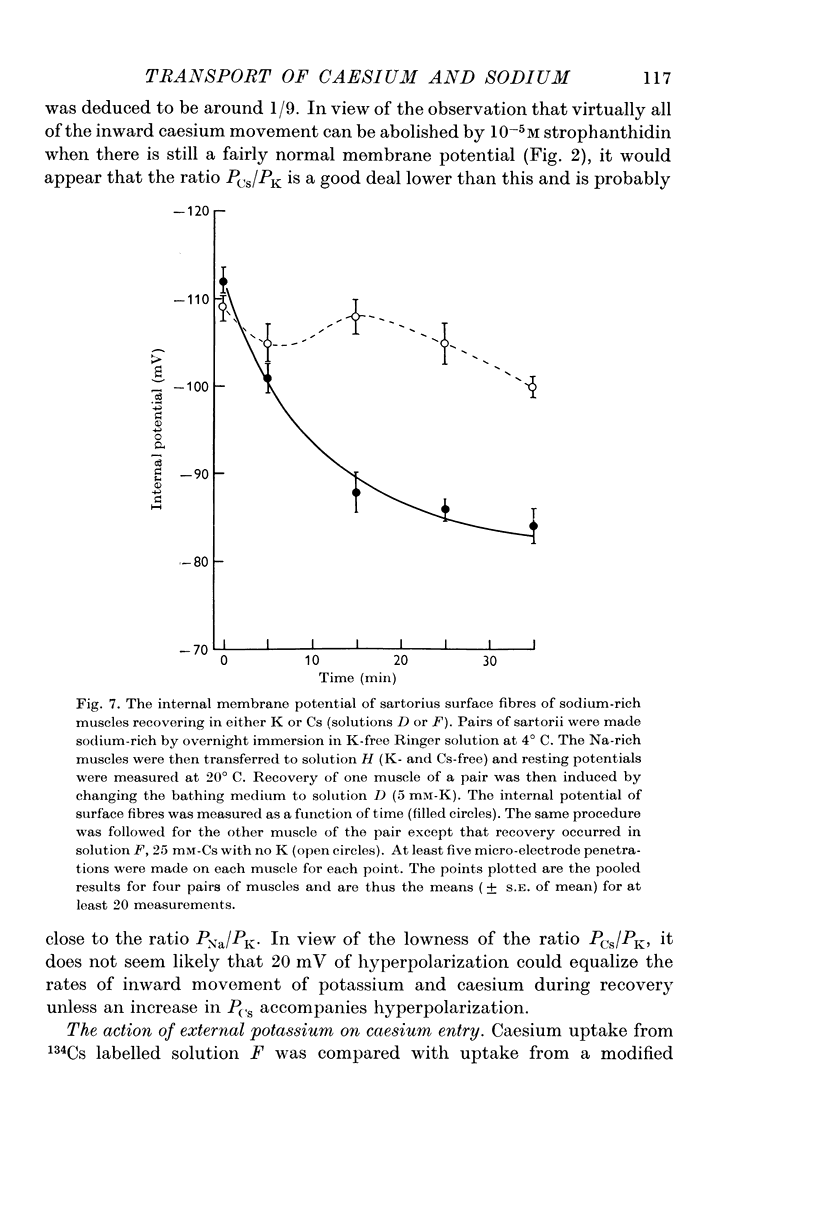
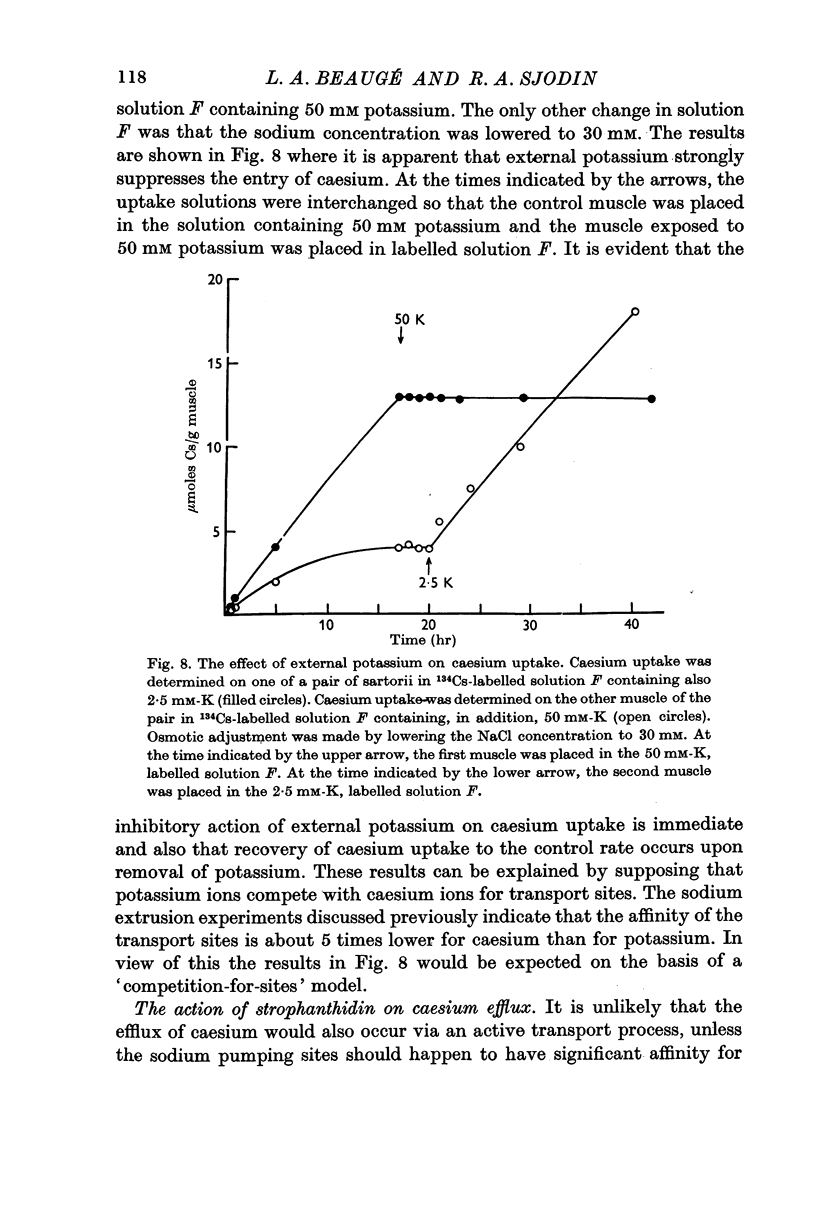
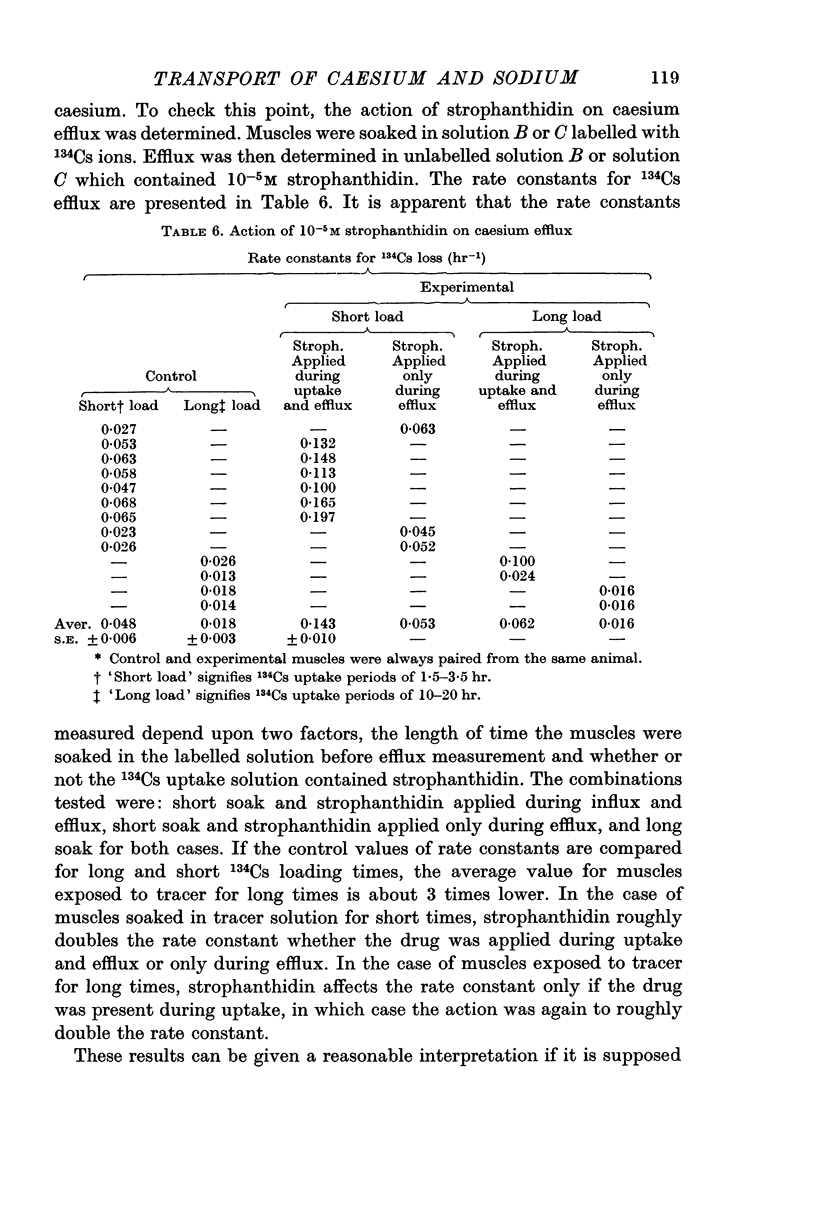
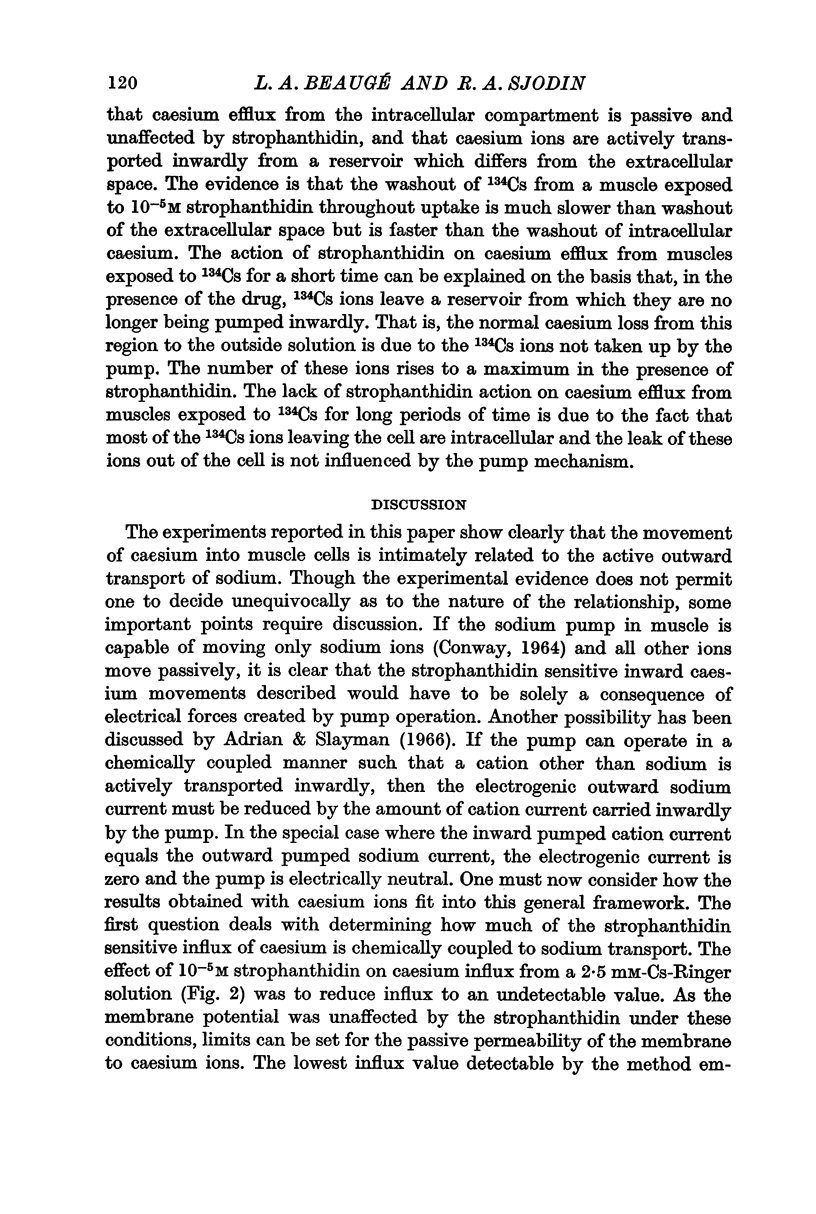

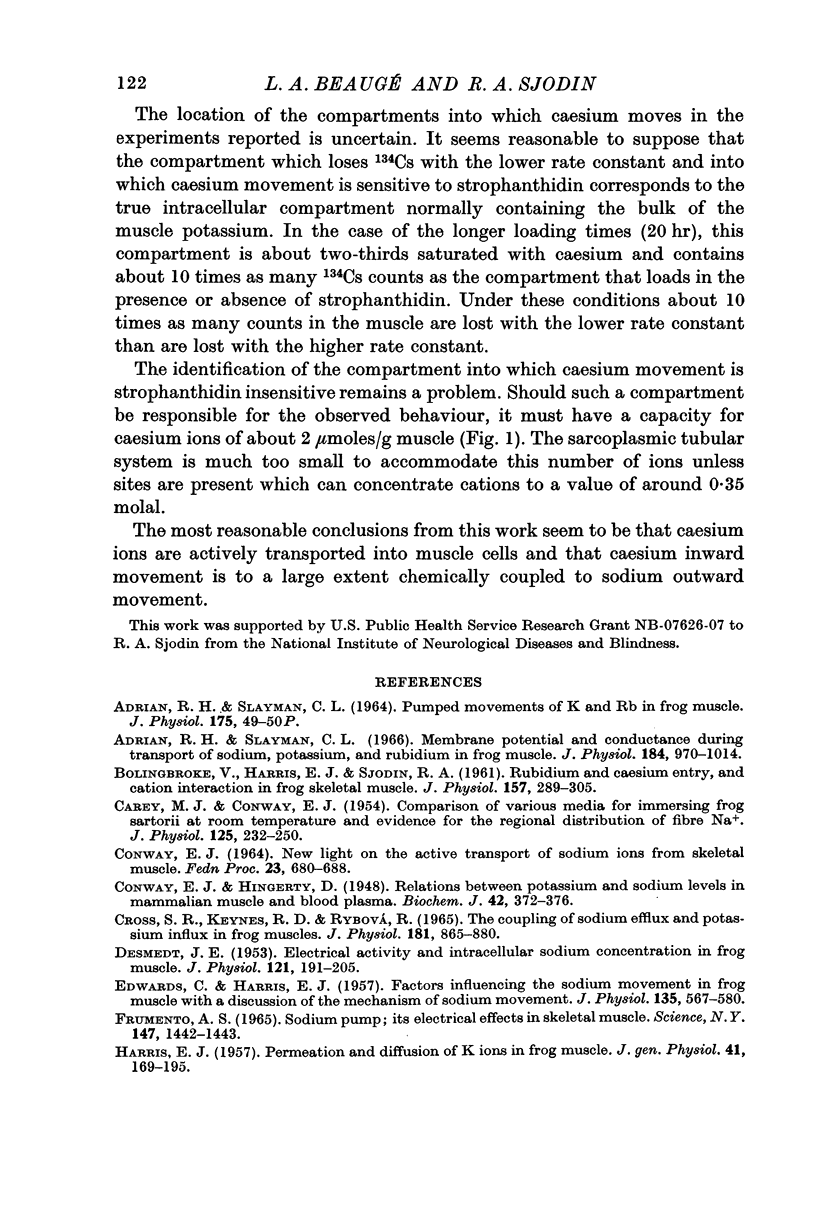
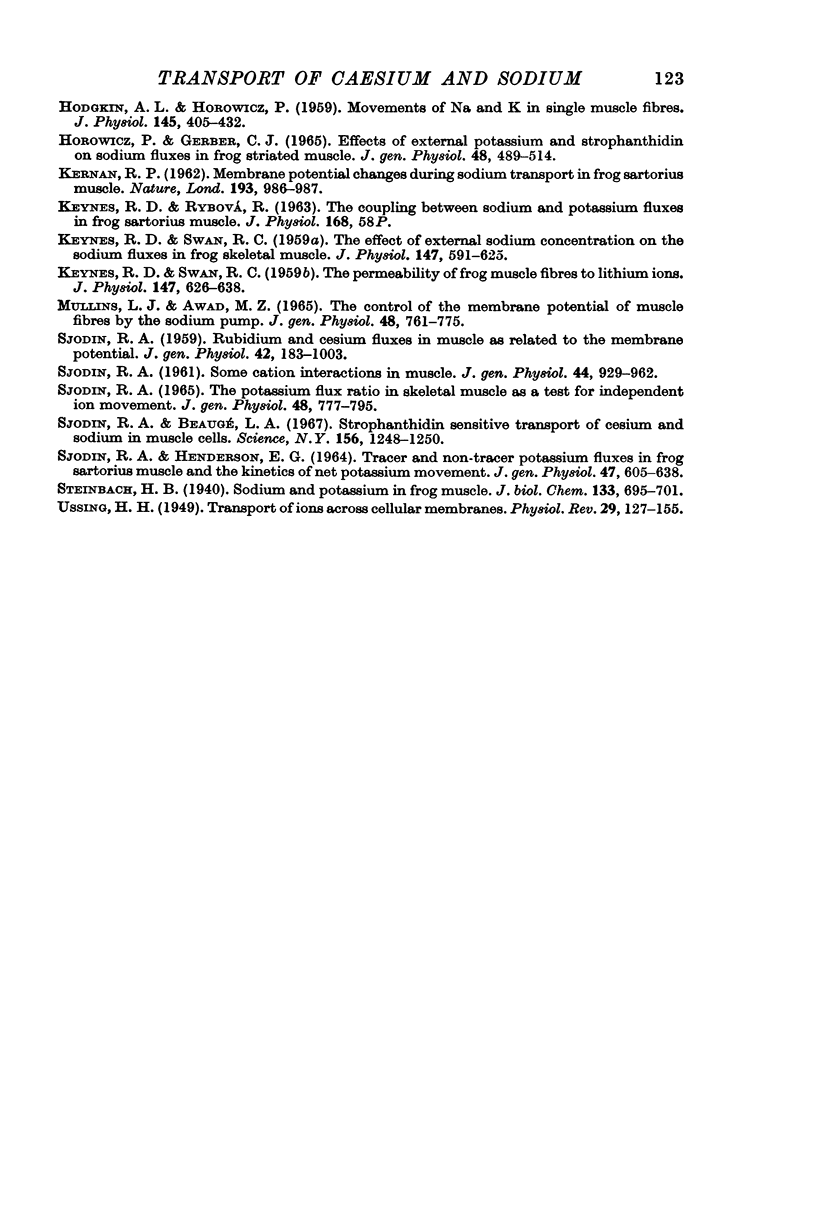
Selected References
These references are in PubMed. This may not be the complete list of references from this article.
- Adrian R. H., Slayman C. L. Membrane potential and conductance during transport of sodium, potassium and rubidium in frog muscle. J Physiol. 1966 Jun;184(4):970–1014. doi: 10.1113/jphysiol.1966.sp007961. [DOI] [PMC free article] [PubMed] [Google Scholar]
- Bolingbroke V., Harris E. J., Sjodin R. A. Rubidium and caesium entry, and cation interaction in frog skeletal muscle. J Physiol. 1961 Jul;157(2):289–305. doi: 10.1113/jphysiol.1961.sp006722. [DOI] [PMC free article] [PubMed] [Google Scholar]
- CAREY M. J., CONWAY E. J. Comparison of various media for immersing frog sartorii at room temperature, and evidence for the regional distribution of fibre Na+. J Physiol. 1954 Aug 27;125(2):232–250. doi: 10.1113/jphysiol.1954.sp005154. [DOI] [PMC free article] [PubMed] [Google Scholar]
- CONWAY E. J. NEW LIGHT ON THE ACTIVE TRANSPORT OF SODIUM IONS FROM SKELETAL MUSCLE. Fed Proc. 1964 May-Jun;23:680–688. [PubMed] [Google Scholar]
- Conway E. J., Hingerty D. Relations between potassium and sodium levels in mammalian muscle and blood plasma. Biochem J. 1948;42(3):372–376. doi: 10.1042/bj0420372. [DOI] [PMC free article] [PubMed] [Google Scholar]
- Cross S. B., Keynes R. D., Rybová R. The coupling of sodium efflux and potassium influx in frog muscle. J Physiol. 1965 Dec;181(4):865–880. doi: 10.1113/jphysiol.1965.sp007802. [DOI] [PMC free article] [PubMed] [Google Scholar]
- DESMEDT J. E. Electrical activity and intracellular sodium concentration in frog muscle. J Physiol. 1953 Jul;121(1):191–205. doi: 10.1113/jphysiol.1953.sp004940. [DOI] [PMC free article] [PubMed] [Google Scholar]
- EDWARDS C., HARRIS E. J. Factors influencing the sodium movement in frog muscle with a discussion of the mechanism of sodium movement. J Physiol. 1957 Mar 11;135(3):567–580. doi: 10.1113/jphysiol.1957.sp005731. [DOI] [PMC free article] [PubMed] [Google Scholar]
- HARRIS E. J. Permeation and diffusion of K ions in frog muscle. J Gen Physiol. 1957 Sep 20;41(1):169–195. doi: 10.1085/jgp.41.1.169. [DOI] [PMC free article] [PubMed] [Google Scholar]
- HODGKIN A. L., HOROWICZ P. Movements of Na and K in single muscle fibres. J Physiol. 1959 Mar 3;145(2):405–432. doi: 10.1113/jphysiol.1959.sp006150. [DOI] [PMC free article] [PubMed] [Google Scholar]
- HOROWICZ P., GERBER C. J. EFFECTS OF EXTERNAL POTASSIUM AND STROPHANTHIDIN ON SODIUM FLUXES IN FROG STRIATED MUSCLE. J Gen Physiol. 1965 Jan;48:489–514. doi: 10.1085/jgp.48.3.489. [DOI] [PMC free article] [PubMed] [Google Scholar]
- KERNAN R. P. Membrane potential changes during sodium transport in frog sartorius muscle. Nature. 1962 Mar 10;193:986–987. doi: 10.1038/193986a0. [DOI] [PubMed] [Google Scholar]
- KEYNES R. D., SWAN R. C. The effect of external sodium concentration on the sodium fluxes in frog skeletal muscle. J Physiol. 1959 Oct;147:591–625. doi: 10.1113/jphysiol.1959.sp006264. [DOI] [PMC free article] [PubMed] [Google Scholar]
- KEYNES R. D., SWAN R. C. The permeability of frog muscle fibres to lithium ions. J Physiol. 1959 Oct;147:626–638. doi: 10.1113/jphysiol.1959.sp006265. [DOI] [PMC free article] [PubMed] [Google Scholar]
- MULLINS L. J., AWAD M. Z. THE CONTROL OF THE MEMBRANE POTENTIAL OF MUSCLE FIBERS BY THE SODIUM PUMP. J Gen Physiol. 1965 May;48:761–775. doi: 10.1085/jgp.48.5.761. [DOI] [PMC free article] [PubMed] [Google Scholar]
- SJODIN R. A., HENDERSON E. G. TRACER AND NON-TRACER POTASSIUM FLUXES IN FROG SARTORIUS MUSCLE AND THE KINETICS OF NET POTASSIUM MOVEMENT. J Gen Physiol. 1964 Mar;47:605–638. doi: 10.1085/jgp.47.4.605. [DOI] [PMC free article] [PubMed] [Google Scholar]
- SJODIN R. A. Rubidium and cesium fluxes in muscle as related to the membrane potential. J Gen Physiol. 1959 May 20;42(5):983–1003. doi: 10.1085/jgp.42.5.983. [DOI] [PMC free article] [PubMed] [Google Scholar]
- SJODIN R. A. THE POTASSIUM FLUX RATIO IN SKELETAL MUSCLE AS A TEST FOR INDEPENDENT ION MOVEMENT. J Gen Physiol. 1965 May;48:777–795. [PMC free article] [PubMed] [Google Scholar]
- Sjodin R. A., Beaugé L. A. Strophanthidin-sensitive transport of cesium and sodium in muscle cells. Science. 1967 Jun 2;156(3779):1248–1250. doi: 10.1126/science.156.3779.1248. [DOI] [PubMed] [Google Scholar]


